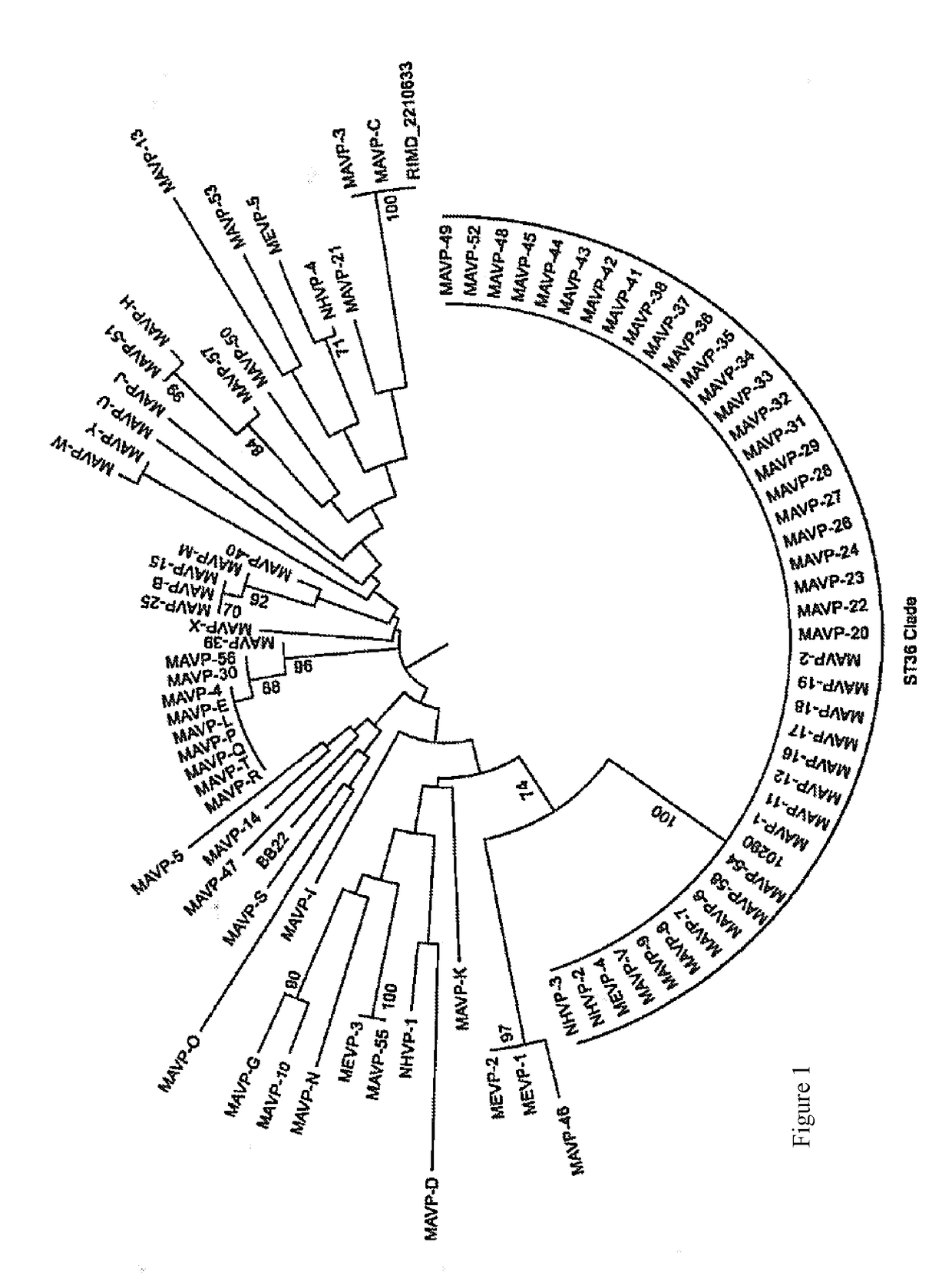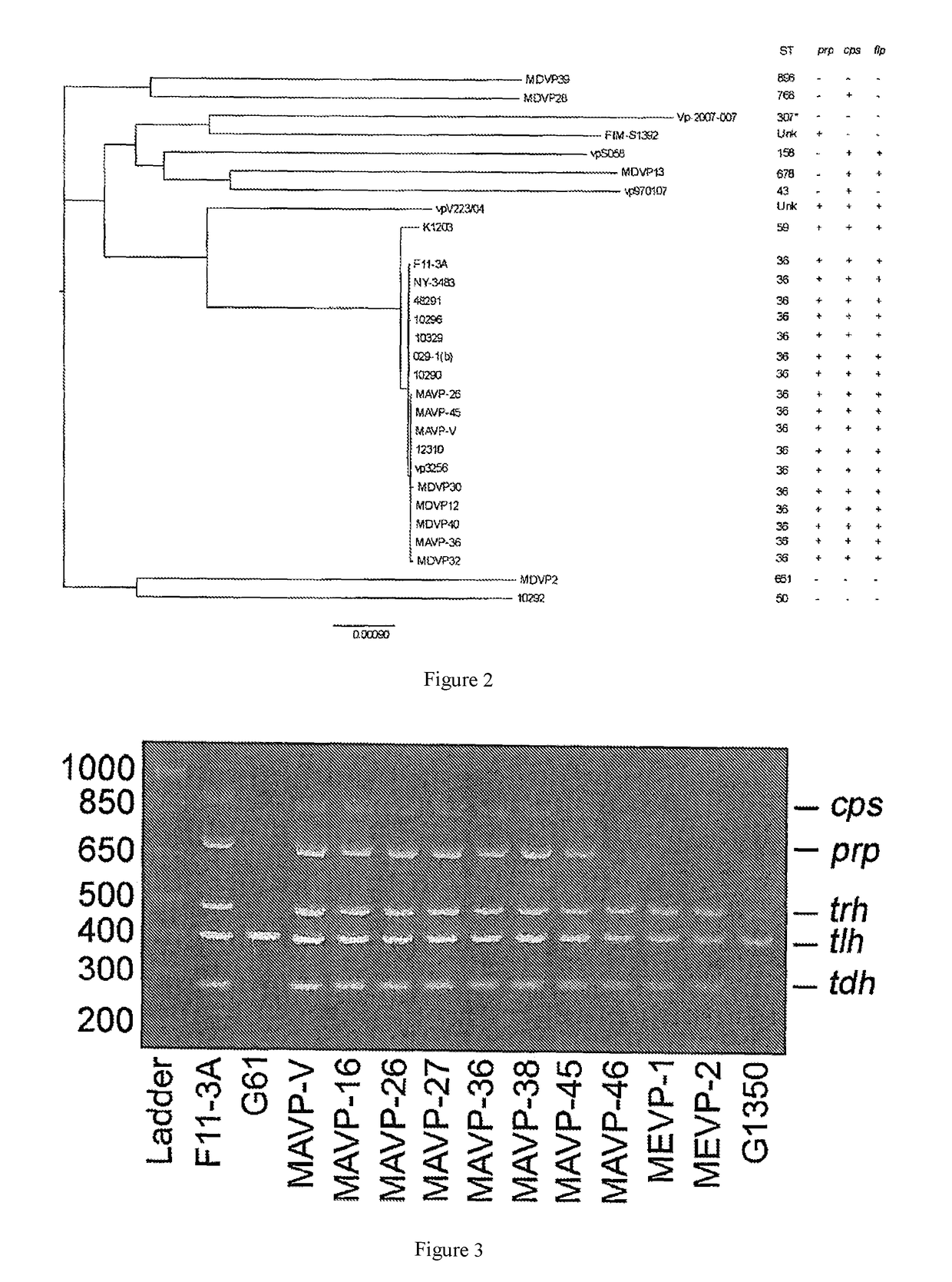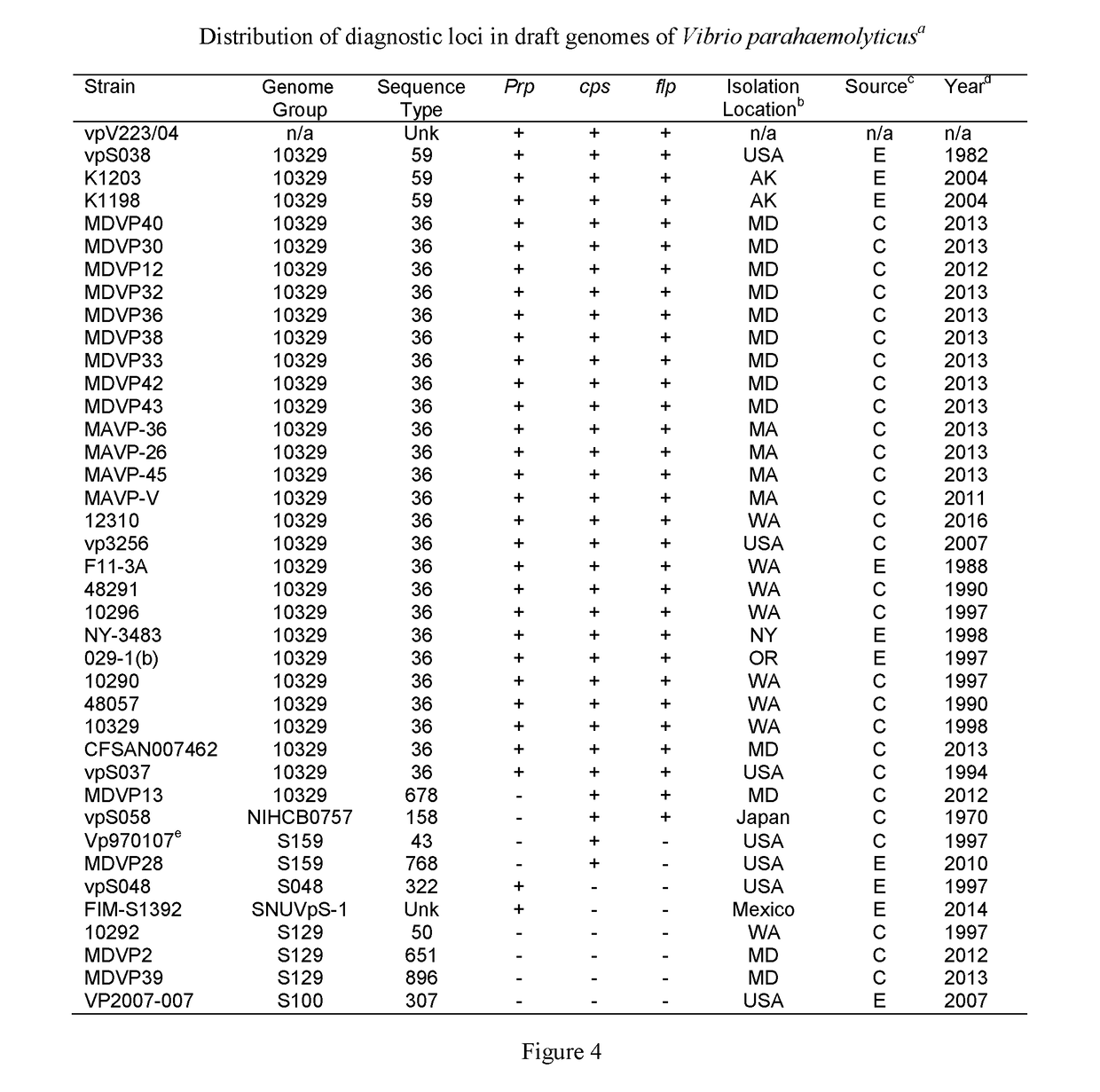Methods and compositions for identifying pathogenic vibrio parahaemolyticus
a technology of pathogenic vibrio parahaemolyticus and composition, which is applied in the field of methods and compositions for identifying pathogenic vibrio parahaemolyticus contamination and infections, can solve problems such as lack of understanding
- Summary
- Abstract
- Description
- Claims
- Application Information
AI Technical Summary
Benefits of technology
Problems solved by technology
Method used
Image
Examples
example 1
[0088]Identification of strains as ST36 currently requires costly and time-consuming DNA isolation, PCR amplification and sequencing of 7 housekeeping loci; however, a subset of the loci informs whether isolates are likely to be or are related to ST36. From among 94 clinical isolates from infections reported in Massachusetts, New Hampshire, and Maine between 2010-2013, during which time infections from the ST36 strain were first reported from Atlantic sources [Martinez-Urtaza J, et al., (2013) N Engl J Med 369:1573-1574], 43 isolates were identical to ST36 at four housekeeping loci (dnaE, dtdS, pntA and tnaA) [González-Escalona N, et al., (2008) J Bacteriol 190:2831-2840]. The relationships of these probable ST36 isolates to 47 of the remaining clinical isolates from the region was determined by constructing a neighbor-joining tree of the concatenated and aligned sequences [Tamura K, et al. (2013) Mol Biol Evol 30:2725-2729] (FIG. 1). This identified three additional isolates that w...
example 2
Specific Identification of Strains by Sequence Type Using PCR
[0099]In addition to ST36, several other sequence types have contributed to the rise in infections, and have been recovered from shellfish harvest areas suggesting they are not transient but resident pathogens in harvest areas. ST631 has caused infections from Atlantic harvest areas from FL to PEI Canada, and currently accounts for ˜10% of infections from Gulf of Maine sources. ST34 (and closely related ST324), ST674, and ST1127 are more rarely detected in harvest areas and cause fewer infections but may be emergent types. All five of these strain types carry the same pathogenicity island harboring both tdh and trh.
[0100]A similar approach to that described for identifying sequence-type (ST)-specific genetic loci for the invasive ST36 strain, (See Example 1; and Whistler et al, 2015), was used to develop a detection process for additional pathogenic lineages. Whole genome sequence comparisons were conducted, and using BLAS...
example 3
Enumeration of ST36 and ST631 by Quantitative PCR-Based Most Probable Number (MPN) Methods
[0105]In order to use these specific loci for quantification of pathogenic Vibrio parahaemolyticus, qPCR assays were designed that are compatible with the currently employed FDA protocol designed by J. Jones (Nordstrom et al. 2007) and based on the Bacteriological Analytical Manual (see fda.gov / Food / FoodScienceResearch / LaboratoryMethods / ucm2006949.htm). Table 3 herein provides a list of oligonucleotide primers used for pathogen quantification.
Methods
Amplification Conditions
[0106]Amplification methods were designed and optimized as needed using routine optimization procedures. For example, cycling was based on the length of the amplicon and annealing was based on temperature of melting. Table 3 provides locus information, primer sequences, and melting temperatures for the primers used in qPCR procedures. Table 3 also provides sequences of probes and some examples of detectable labels that were u...
PUM
| Property | Measurement | Unit |
|---|---|---|
| extension time | aaaaa | aaaaa |
| nucleic acid | aaaaa | aaaaa |
| luminescent | aaaaa | aaaaa |
Abstract
Description
Claims
Application Information
 Login to View More
Login to View More - R&D
- Intellectual Property
- Life Sciences
- Materials
- Tech Scout
- Unparalleled Data Quality
- Higher Quality Content
- 60% Fewer Hallucinations
Browse by: Latest US Patents, China's latest patents, Technical Efficacy Thesaurus, Application Domain, Technology Topic, Popular Technical Reports.
© 2025 PatSnap. All rights reserved.Legal|Privacy policy|Modern Slavery Act Transparency Statement|Sitemap|About US| Contact US: help@patsnap.com



